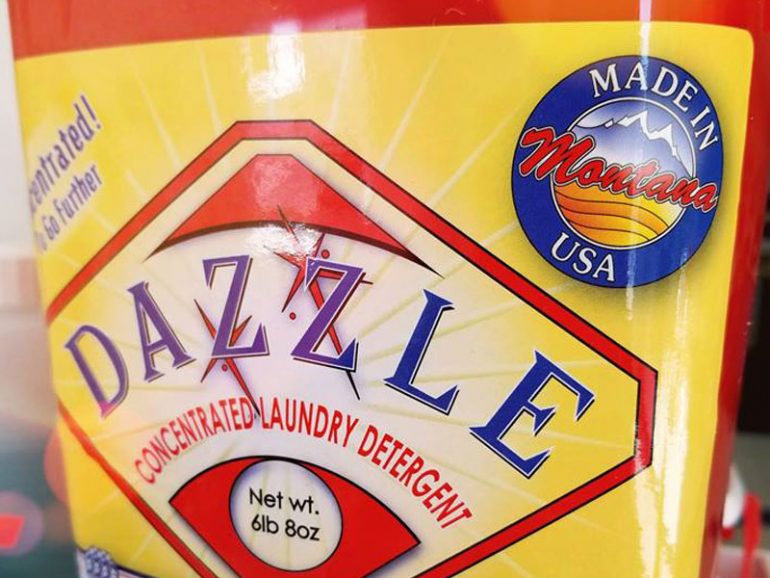If you stroll down the aisle of your local grocery store, you may come across a food item carrying a Made in Montana emblem. Perhaps you’ve spotted the sticker on price tags of artisan jewelry at a farmer’s market or on a bag of ice at the gas station. There are a variety of products that bear the Made in Montana mark and it seems our homegrown seal of authenticity is cropping up everywhere. But it’s the symbol’s pervasiveness that should give us pause. What does the Made in Montana seal stand for anyway?
Today’s hypercompetitive marketplace has created the need for merchandise marks indicating where and how a product is designed, sourced, manufactured and in some cases packaged. Whether surveying California avocados or Swiss watches, the companies, industries and regions involved in their production and sales are locked in a race to capture their merchandise’s territorial essence, protect its locational authenticity and promote its unique heritage.
A merchandise mark may simply be an indicator of a good’s origin of production (i.e., country of origin), used purely for the purpose of making the supply chain more transparent. However, products carrying a region’s merchandise mark may additionally draw on the desire to deliver a representative product whose manufacturing may have occurred in a number of places. Ideally, governments, consortia and member companies that band together in a coordinated effort, push the bar of what it means to be “made in,” distinguishing their product in the eyes of the consumer while keeping competitive forces at bay.
Next year, Made in Montana will celebrate the 35th anniversary of its circular, multicolored emblem, which adorns everything from beef jerky to automotive drain plugs, dental instruments to drift boat anchors. Meant as a way to promote products either created or enhanced in the Treasure State, the Made in Montana program boasts 3,400 participants, whose products are sold online and across hundreds of retail locations.
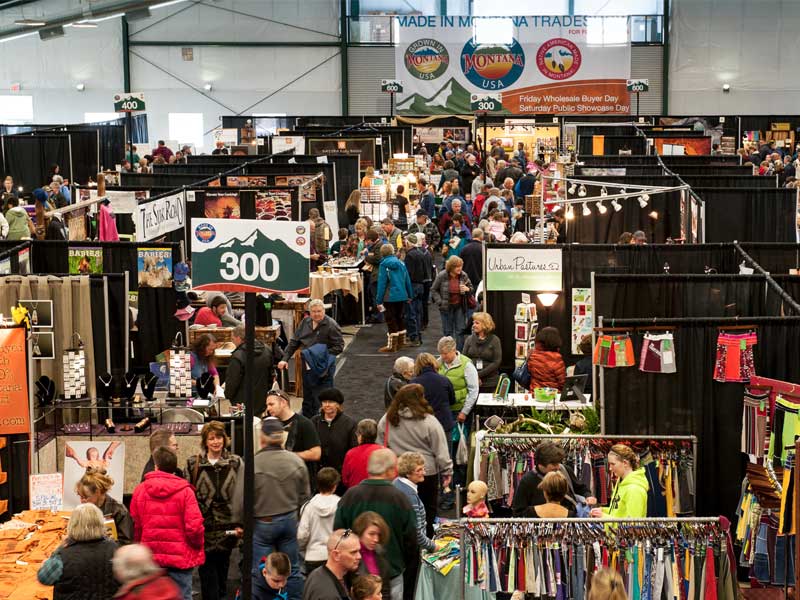
For a product to be eligible to carry this designation, the Montana Department of Commerce asks that it be made or substantially transformed (the finished product valued 50 percent or more than the individual parts) within the state. With this designation businesses can leverage the Made in Montana pillars put forth by the Department of Commerce.
These pillars are meant to infuse products with a set of distinctive values to help potential buyers in their purchasing decisions. Yet, in review, it is apparent that products with the Made in Montana seal could just as well be made in Wyoming, Alaska or even Canada for that matter.
- A Cut Above: We consider our members a cut above, because not just anyone fits this brand. In Montana, we hold each other to a higher standard – that means we are tougher, friendlier and more likely to come through in a pinch. The things we make and grow here should live up to the same ideals. If it’s produced in Montana, it’s produced with pride.
- Through and Through: The products are Montana through and through and reflect the qualities that make Montana great. Montana is known for its spectacular, unspoiled nature, charming towns, relaxing hospitality and breathtaking experiences. The people and products that wear these badges carry a piece of that reputation with them, sharing the Last Best Place with all.
- Here by Choice: Our members are here by choice and believe working in Montana is a privilege not a burden. The choice to start, grow or move a business in Montana tells you a lot about the people doing it. We are not just creating, producing and harvesting – we are choosing a better way of doing things.
It goes without saying that the Made in Montana mark has enjoyed its share of success. A 2016 survey on traveler spending in the state indicated that Montana-made product purchases ranked seventh among nonresident expenditures, with tourists spending on average $10.20 per day. The survey provides a breakdown of goods purchased by tourists and not surprisingly foods, such as the huckleberry jams and cordials, are at the top the list (Table 1).
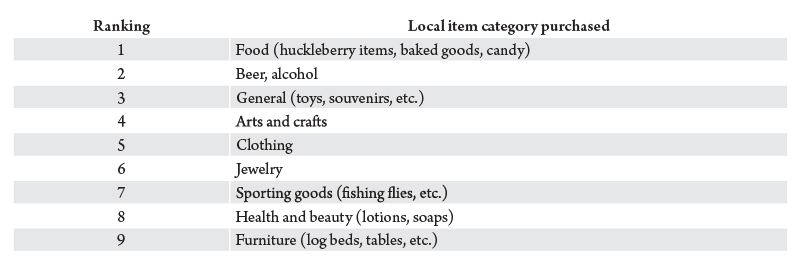
Further down the list however, some of the product categories capturing Montana’s essence becomes less clear. The products listed on the Made in Montana website may reflect the program’s pillars, but the approach taken to including products in the program is top-down. For many the only unifying thread is that they are wholly or partially made in the state. The vantage point for the designation is solely from the supply side and lacks a deeper consideration for a product’s uniqueness, which could compel a buyer to walk past competitive items and reach for a Made in Montana product.
There is a clear disconnect if we go strictly by the program’s pillars for what makes a Montana-made product. After all, to what extent can a handmade soap broadcast that its maker is tougher, friendlier and more likely to come through in a pinch? Or how does an industrial gate latch communicate that its producer is in Montana by choice? From a demand-side vantage point, what exactly defines a Made in Montana product, in its overarching brand persona and related expectations, is much more elusive.
What do consumers perceive when they hear Made in Montana? Aside from being created or substantially transformed in our state, what are the unifying qualities that bind together an overhead crane, cocoa powder or musical instrument cables? To help bring some clarity to the issue we can turn to one of the most successful merchandising marks in the world – Made in Italy.
What It Means to Be Made in Italy
For both consumer and commercial buyers, a product carrying the Made in Italy mark evokes a set of qualities that allows it to consistently command a premium in today’s global marketplace. Companies like pasta producer Barilla and the fashion brand Armani have leveraged their Made in Italy association and its endorsement to successfully enter foreign markets and compete against homegrown competitors.
However, the Made in Italy designation did not become one of the most successful international certifications of authenticity by accident. Using a proactive and disciplined bottom-up approach, the participants built the brand by keeping to product categories with a strong potential for both absolute and relative competitive advantage.
Today, the Made in Italy designation is best embodied by products represented by the 4F industries: food, fashion, furniture and Ferrari (or machinery). From the perspective of the buyer, the common thread running through these categories can be captured in one word – quality.
In expressing what Made in Italy stands for Italian architect Andrea Zambon noted, “It means, I made this for you… this is what I know how to do best.”
The value promise and accompanying price tag of Prada leather bags, Luxottica eyewear and shoes by Fratelli Rossetti is predicated on their design and manufacturing quality. Similarly, furniture designers such as Casamilano and Turri draw on the excellence and creativity of their craftsmanship to position themselves in the luxury market.
While Ferrari is emblematic of Italy’s longstanding legacy in automotive innovation, their emphasis on quality in machinery also spills over into the industrial sector. Lonati, a producer of fine-gauge hosiery machines, holds nearly 80 percent of the global share of their market.
Within the food category, quality comes from a strict adherence and often long-standing regional tradition to ingredients and value-added processes in the production of products like Parmesan cheese, authentic Genoese pesto and coffee.
Take Prosciutto di Parma, the cured meat delicacy, with approximately $2 billion in consumer sales worldwide. Producers are represented by the Consorzio del Prosciutto di Parma, an E.U.-supported governing body established to safeguard, protect and promote the designation of origin. To be eligible to receive the coveted Parma crown emblem, members are required to strictly adhere to a 40-page guideline attending to all the phases of production:
- Inputs – types of pigs, origin of birth, feed specifications.
- Characteristics of pigs – location and phases of breeding, exact age and weight of pigs at time of slaughter.
- Manufacturing – location of slaughter and processing, curing environment, maturation ingredients, raw product, process and time requirements.
- Characteristics of finished products – size and weight dimensions.
- Slicing and packaging – location, environment and method of slicing, packaging design and shelf life requirements.
Once authenticated, the product can then be considered for the next level of certification. Products traditionally and entirely produced in a specific region receive the Protected Designation of Origin mark, while those partially produced in a region receive the Protected Geographical Indication seal. These certifications are safeguarded and enforced by both the Italian government and the European Parliament.
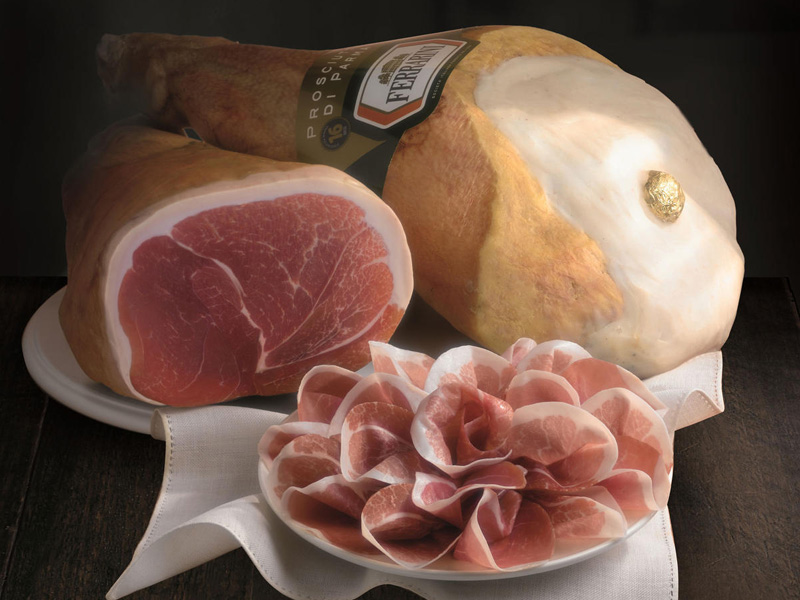
Each of the 4F categories are represented by ambassador companies who embody and evoke what it means to be Made in Italy. In the food category, chocolate maker Ferrero, cured meats manufacturer Fratelli Beretta and Barilla occupy these coveted roles. With the support of the Italian Trade Commission, Italian Chamber of Commerce, Italian Tourism Agency and Italy’s economic development ministry, these ambassadors represent and uphold the brand while promoting the quality and authenticity of Made in Italy internationally.
For the Made in Montana designation to garner added worth and weight in the same way means shifting perspective. The pillars would need to emphasize the value offered to the customer or the expectation from the customer about the value delivered and experienced by the product – rather than the features, characteristics or attributes of the producer. In other words, instead of promoting products and product categories based on producers who are tougher and more likely to come through in a pinch, products should be selected on the promise and delivery of a benefit to the purchaser, such as their ruggedness or durability.
Once we’ve identified what we know how to do best, we can then highlight these categories and their representative companies. The ambition would be to create a variety of self-coordinating and self-sustaining ecosystems that can compete not just across state lines, but around the world.
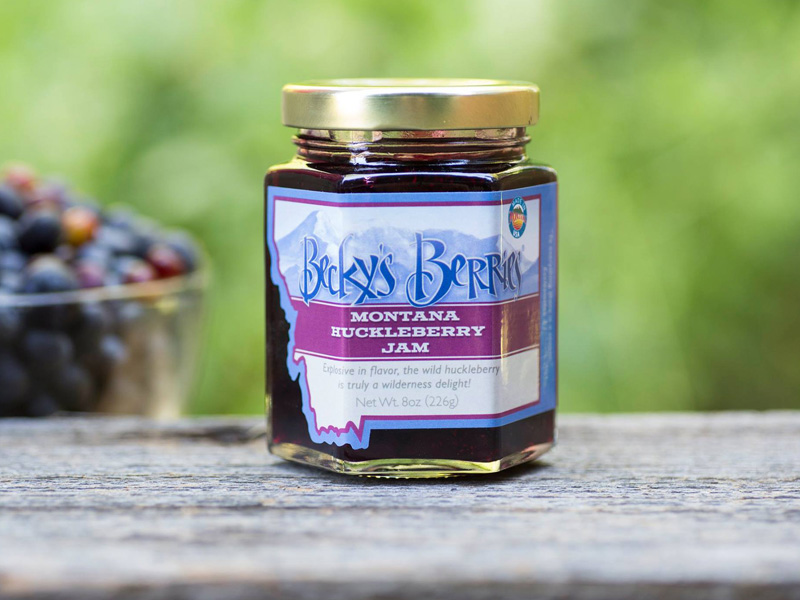
At first glance, it may seem like a stretch to compare the world’s seventh largest economy with a population of 60 million to Montana and its population of 1 million. Yet, we can draw on one overarching commonality between the two — the family business. Both the Italian and Montanan economies are built on an above-average preponderance of small- to medium-sized family-run enterprises. Simply said, family businesses have a reputation for trying harder. Moreover, family businesses are often rich with traditions and knowledge that over generations have become the secret sauce in the making of their products, whether that’s buffalo jerky from the Bitterroot or mortadella from Bologna.
We should consider the success of the Made in Italy seal when we think about the Made in Montana mark and how it can remain relevant and valuable in an increasingly competitive marketplace. What should it mean for something to be Made in Montana? What are the prevailing attributes that will make a buyer walk past competitive offerings and reach for a product carrying our emblem?
To get to the heart of the issue, we need to start by asking some tough questions. The first question is simple – what do we do best? In answering this truthfully, we can set off on a journey to make Made in Montana stand out in the growing pandemonium of globalization.


